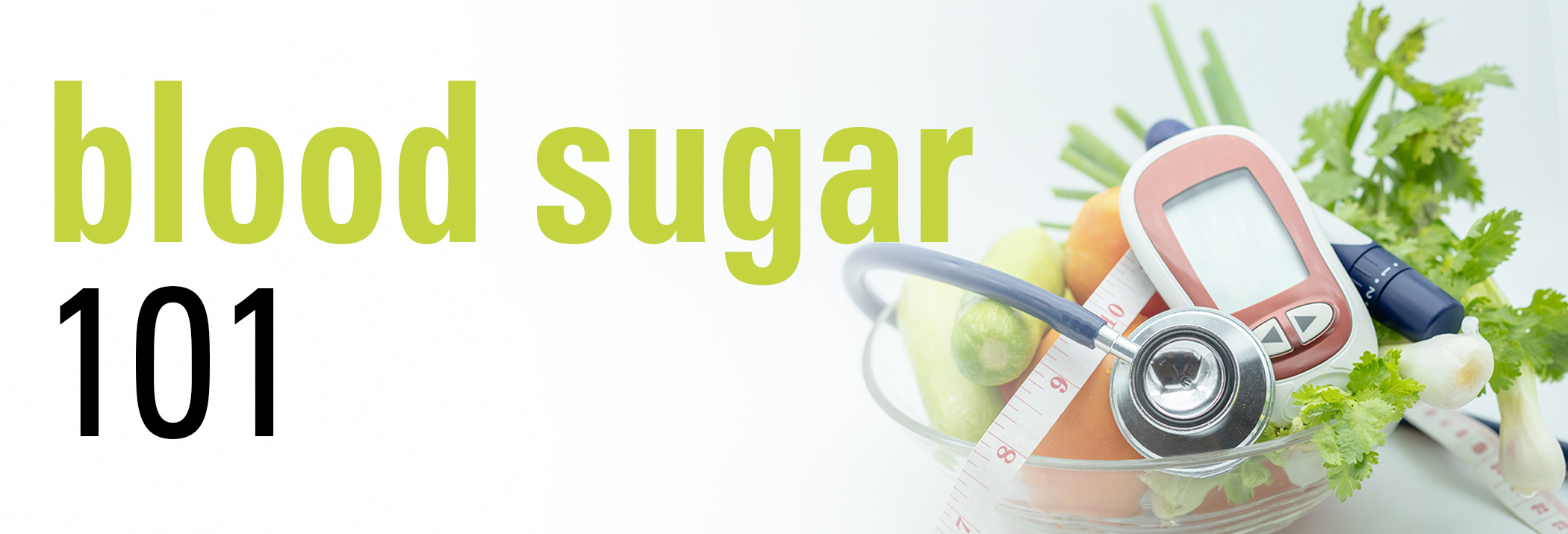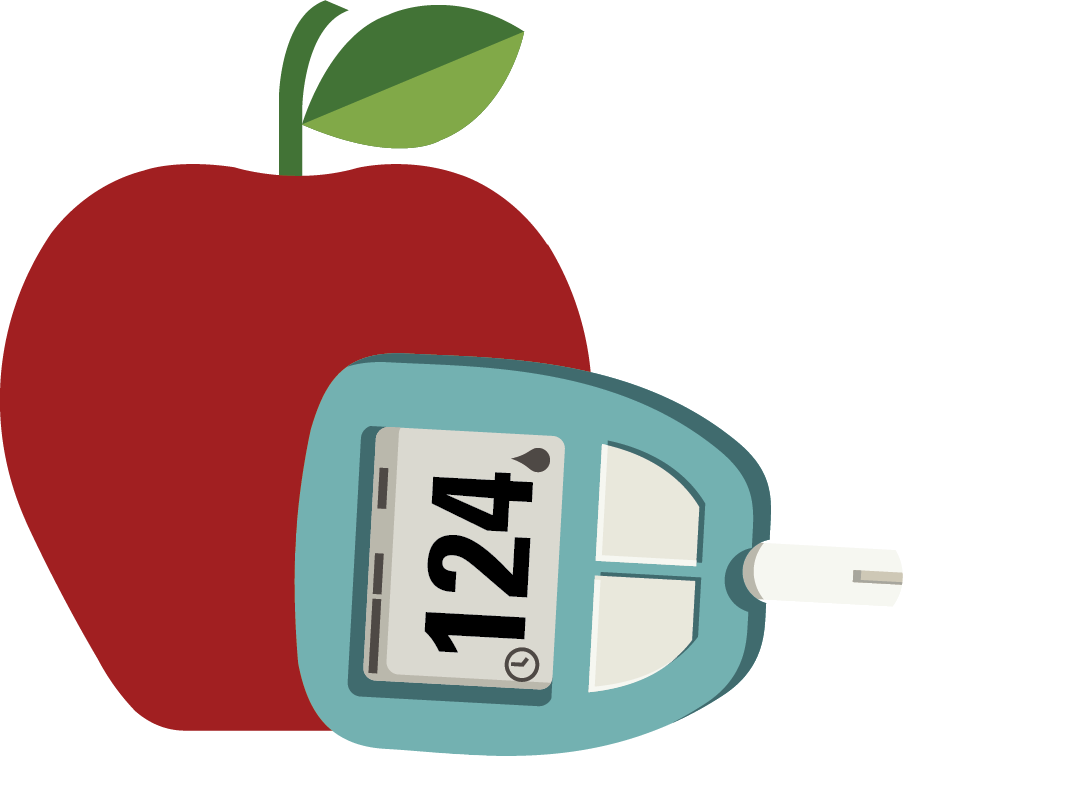
Manage Diabetes with a Healthy Lifestyle
If you have diabetes, it's important to know you can live a healthy, active lifestyle when you practice good health habits. Eating a healthy carbohydrate-controlled diet along with regular exercise can help you manage this disease, and can even help reverse it.
Diabetes occurs when the body is unable to properly use insulin to digest food. Insulin is produced by the pancreas and serves to help transfer sugar and carbohydrates into usable energy. When this happens, the cells cannot get the energy they need and there is an overabundance of sugar in the blood leading to serious health consequences. According to the Mississippi Department of Health, more than 12% of the adult population in our state has type 2 diabetes, which is the most common type of the disease. It is most often associated with lifestyle habits like obesity, lack of exercise and poor diet. Type 1 diabetes, also known as juvenile diabetes, more commonly affects children and young adults.
To control your blood sugar, it’s important to eat a healthy carbohydrate-controlled diet, exercise regularly and follow your Network Provider’s advice on managing your blood sugar. Working with a dietitian or diabetes educator can also help you develop a nutrition plan that’s right for you.
Eating Healthy with Diabetes
Eating a healthy diet designed for managing diabetes is essential for your health. But you don’t have to deprive yourself of everything you enjoy! Moderation is key when you know what you can eat, how much of it you can eat and how often you can eat it. Once you’ve taken the guesswork out of eating, you can truly enjoy a healthy eating plan. The American Diabetes Association offers some helpful tips on healthful food choices.
Carbohydrates and Diabetes
Carbohydrates are key when it comes to a healthy diabetes meal plan. That’s because carbohydrates raise blood sugar. And if you have diabetes, it’s important to keep blood sugar from rising too much, too quickly or dropping too low. Keeping track of your carbohydrates and knowing how much you can have can help you keep your blood sugar in check. The key to managing your blood sugar is spreading out your carbohydrate intake throughout the day.
There are five types of food that will increase blood sugar. These include:
- Grains
- Fruit
- Dairy
- Sweets
- Starchy vegetables
For a diabetic diet, these foods should be spread out throughout the day and limited at each meal using portion control. A general rule of thumb for carbohydrate counting is you need about 3-4 carbohydrate foods per meal and 1-2 per snack. Each carbohydrate food is considered an exchange. One carbohydrate exchange is equivalent to 15 grams of carbohydrates. A good way to think of this is using money. If you have 16 dollars to spend on food for an entire day, how will you use it? You want to use it wisely and know how to make it benefit you the most. So you’ll want to spread it out and make it last. Therefore, you could spend 4 for breakfast, 1 for a mid-morning snack, 4 for lunch, 1 for mid-afternoon snack, 3 for dinner, and 2 for a bedtime snack. Here is a helpful carbohydrate exchange chart to help you determine your food choices.
Exercise
Regular exercise is important to a healthy lifestyle, especially if you have diabetes. It can help you achieve or maintain a healthy weight, lower your blood pressure, cholesterol and blood sugar. Aim for at least 30 minutes on most days participating in a moderately-intense activity, like walking. If this is too much, start with a few days a week and always follow your Network Provider’s advice on exercise.
Follow Your Network Provider's Advice
Stay connected with your Network Provider through your annual Healthy You! wellness visit. This benefit provides age and gender–specific health screenings, including blood sugar, at no out-of-pocket cost. Download our Healthy You! Wellness Guide to learn more.
To learn more about diabetes prevention and management, you can visit the American Diabetes Association’s website. WebMD also offers valuable information related to diabetes.

Provider Partnership
Diabetes is one of the most common chronic conditions in the country. The CDC estimates that over 11% of Americans have diabetes. Most troubling is the increasing incidence of this disease in young adults. In addition, prediabetes impacts almost one in three Americans and many of these patients progress to diabetes over a five-year period.
Given the disease burden of diabetes in Mississippi, Blue Cross & Blue Shield of Mississippi (BCBSMS) has been working with Blue Primary Care Network Providers to improve the diagnosis, evaluation and treatment of diabetes and prediabetes. A key component of the effort was the creation of a Diabetes Management Report that is being shared with all Blue Primary Care Network Providers.
The Diabetes Management Report provides clinically relevant, actionable data of an individual provider’s management of diabetes and prediabetes within their clinic. The ability to report key clinical quality metrics such as diabetes control, lipid management, blood pressure control compared to peers in their clinic, region and state allows the physician to get a glimpse of their current performance. In addition, the physician is able to determine medication prescribing habits, patient medication adherence and ED utilization. The report also allows the Health Coaches to work with the physician and nursing team to identify at-risk patients and engage them in taking control of their health.
Dr. Lee Greer, BCBSMS Corporate Medical Director, says, “The work of the team at BCBSMS in this effort has allowed us to have meaningful discussions about clinical care with physicians. Every physician wants the best care for their patients. This information coupled with a discussion of evidence-based guidelines and ways to build high performing teams establishes a clinical connection between BCBSMS, physicians and patients. I am very proud of the work of the entire team. The enthusiasm around this effort has been infectious and I can’t wait to see the improvements in diabetes care in the coming months and years.
This summer there have been numerous meetings with individual physicians and groups to review their management of diabetes. The feedback from the provider community has been positive. After a meeting in late June, a physician called back to thank the team for the report. He stated he had worked with his nurse to review all of his patients that were not adequately controlled and they were asking them to return to the office for a follow-up visit.”



